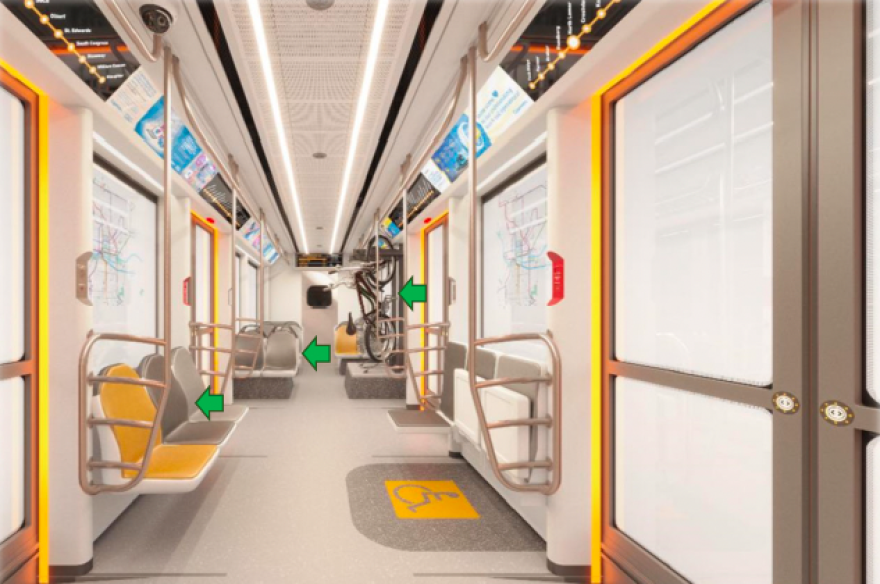Trains on Austin's light-rail lines would have low-floors to make boarding easier and faster. Each train would have five passenger entrances per side. And the all-electric vehicles are expected to include a strip of colored LEDs on the outside to show which route you're taking: the Orange or Blue line.
Those are some of the details unveiled by Project Connect planners as they piece together their aspirations for a fleet of vehicles that would run along light-rail lines approved by Austin voters in 2020. The routes include more than four miles of subway tunnel in downtown and South Austin.

The Austin Transit Partnership (ATP) will include the wishlist of train features when it starts reaching out to manufacturers next year. Officials said it's still too soon to know when they'll buy the trains. ATP will procure them, but the vehicles will be owned by Capital Metro.
"We have to put together design criteria for the proposal," ATP's Chief of Architecture and Urban Design Peter Mullan said. "But then you put it to bid to get the best deal you can from the market."
Passengers won't be able to board Austin's light-rail lines until 2029 at the earliest. Construction is slated to begin in late 2024 or early 2025.
But those schedules could get pushed back to spread out the growing costs of light-rail. Inflation and changes to the design have almost doubled the estimated price tag to more than $10 billion.

The decision to choose trains with floors close to the ground means passengers won't need to climb stairs or ramps to an elevated rail platform at each station.
"We've really pushed towards 100% low floor, just seeing more benefits, especially to this community," Dave Kubicek, CapMetro's executive vice president of systems and vehicles, said in an online presentation. "Accessibility is just key for all phases of the service."
Lower floors have some disadvantages, including trains that don't go as fast. But Kubicek said they should still get up to about 55 miles per hour.
As of now, ATP plans to use trains powered by overhead wires known as catenary. The trains would also have batteries to run for stretches without catenary.
The trains would have no doors between cars, so you could walk the entire length of the train while inside. The feature, known as an "open gangway" in train-speak, allows passengers to distribute themselves more evenly when the routes get busy.

Inside the vehicles, riders could have space for bicycle storage. Electronic screens would display information about the route and possibly the weather. Emergency intercom buttons would be illuminated so you could see them easier.
The vehicles would have to meet the requirements of the Americans with Disabilities Act of 1990 and include space for people in wheelchairs among other accessibility features. Seats would have grab handles for those who have limited mobility getting up and down. Audio alerts would notify people which station they're at — a familiar sound on modern transit systems.

The conceptual illustrations are still open to input and subject to change. But these early designs give the public their most detailed glimpse yet at what will one day become a familiar feature on Austin's streets.











